
Baby Zebra Born With Polka Dots Is The Rarest Of It's Kind
Nature keeps surprising us with new and exciting changes.

No matter how long you’ve been on this Earth, and all the wonderful things you’ve experienced in life so far, one thing will always be true: Nature will never cease to be amazing. This is backed up with footage of a one-of-a-kind zebra foal.
Antony Tira, a safari guide, first spotted this unusual zebra foal in the Masai Mara National Reserve in Kenya. The guide named the foal “Tira,” after his own surname since he was the first one to discover this unique creature.
Tira the foal is the only one of his kind in the Masai Mara Reserve. He is mostly brown, with white spot markings., and has a short hairless tail, unlike a normal zebra.
Tira has a rare condition called pseudomelanism. This rare genetic mutation appears in animals causing them to display some sort of abnormality in their stripe pattern, explained Ren Larison, a biologist studying the changes of zebra stripes at the University of California, Los Angeles.
Unlike the similarly rare genetic mutation called albinism, which is caused by a lack of pigmentation, pseudomelanism occurs because of excess pigmentation in the skin and fur which make it appear melanistic.
While Tira is quite a sight to behold, his extremely rare condition can negatively affect his life. Without stripes, Tira may be at risk of overheating, being singled out by predators, and biting flies, which researchers theorized are kept at bay by zebra’s stripes.
The biting flies can carry diseases like equine influenza, which can be lethal for the young foal. However, if Tira manages to survive these hurdles and live until adulthood, there’s no reason to believe he won’t fit into the herd.
Although Tira is the first-ever recorded case of pseudomelanism in the Masai Mara, years ago a similar case was reported in north-western area of the Okavango Delta. Unfortunately, these foals didn’t survive much longer than six months of age, the last one of its kind ended up hunted and killed by hyenas.
Keep reading to see the fascinating pictures and videos of this remarkable little foal.
Tira and his Mom
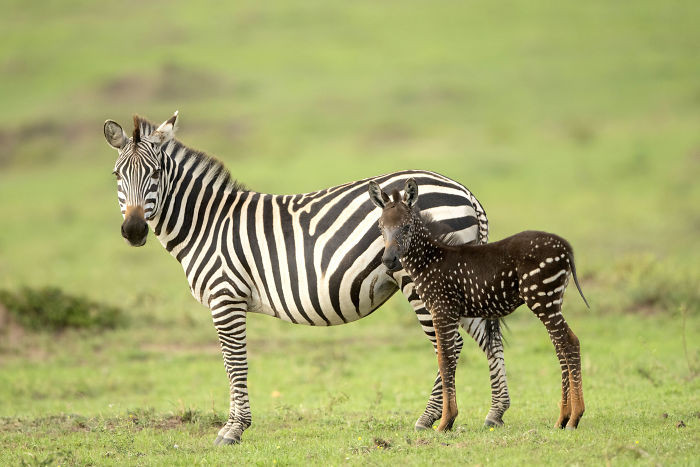 Rahul S Photography
Rahul S PhotographyMaking sure not to stray too far from the herd
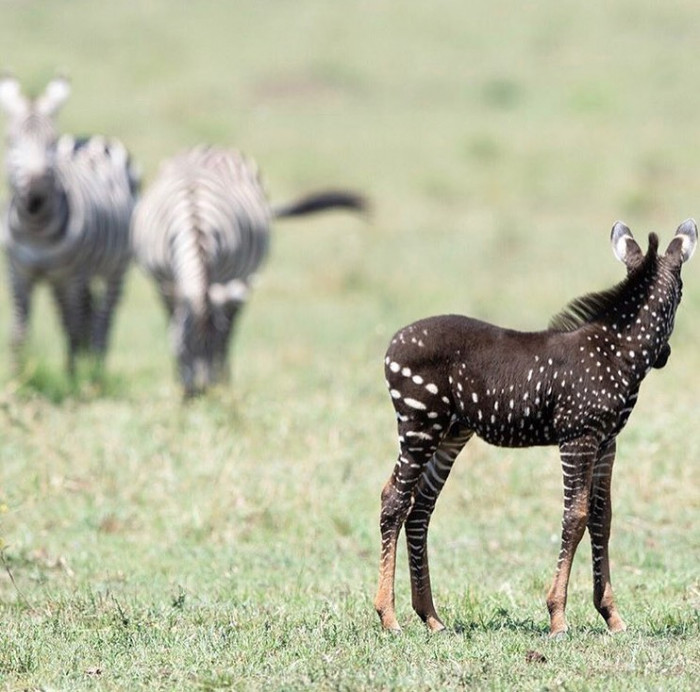 Rahul S Photography
Rahul S Photography
Quite the unique lookin' fellow
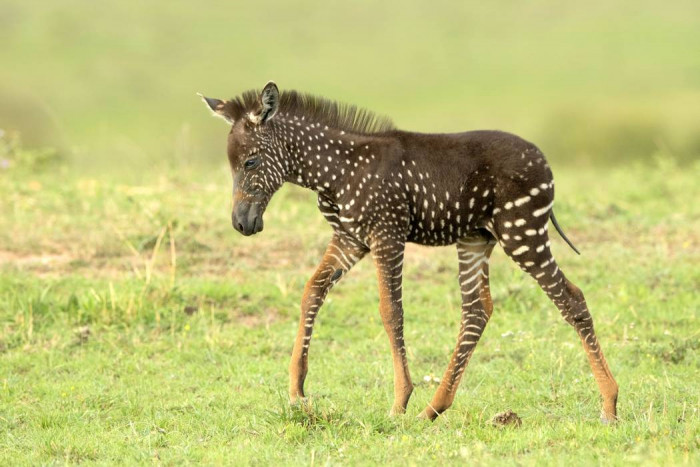 Rahul S Photography
Rahul S PhotographyHis face has interesting patterns, too!
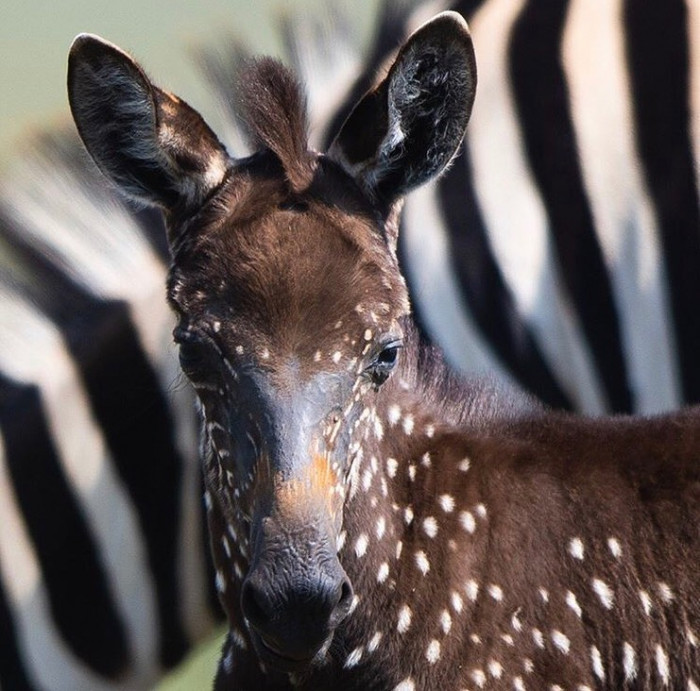 Facebook: The Wildest Africa
Facebook: The Wildest Africa
Tira looks SO FLUFFY
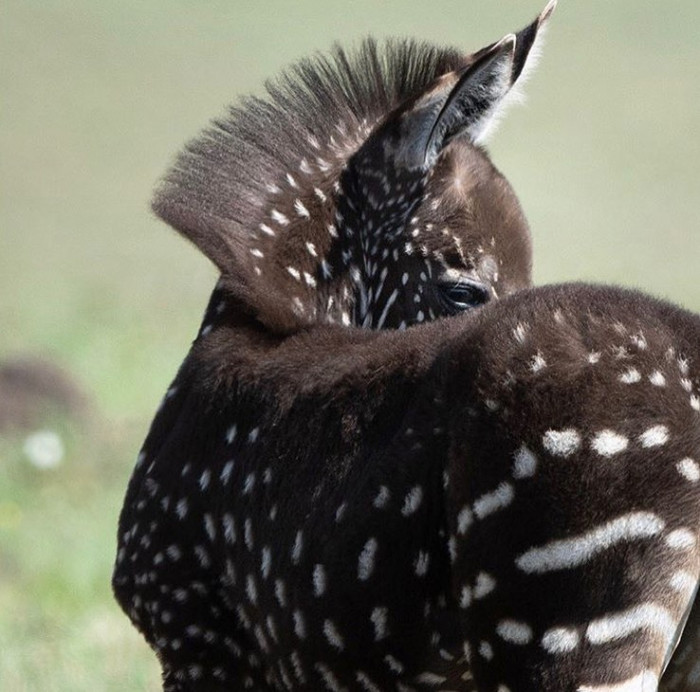 Facebook: The Wildest Africa
Facebook: The Wildest Africa  giphy
giphy
Nuzzling his Mama
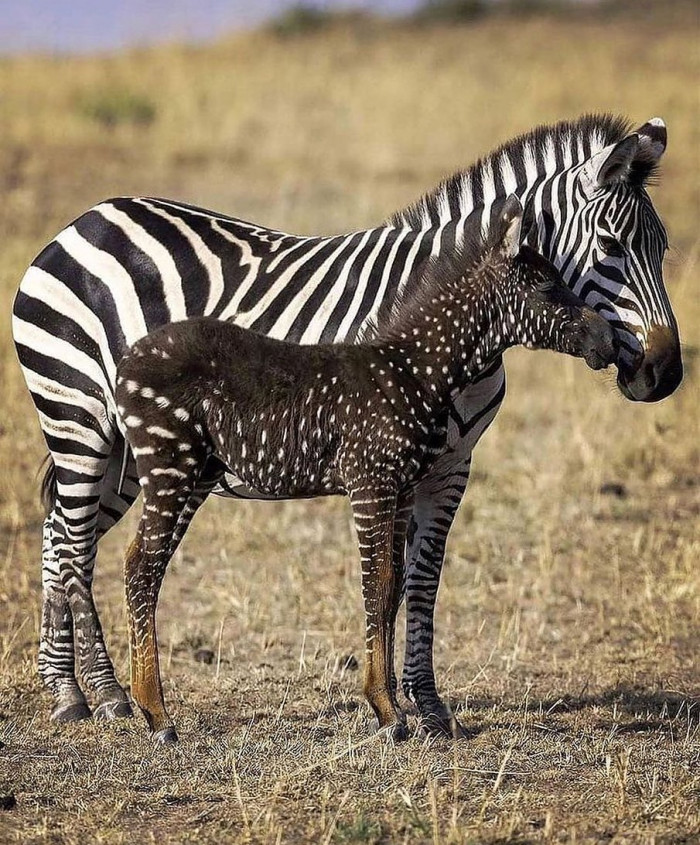 Facebook: The Wildest Africa
Facebook: The Wildest Africa Baby zebra blep
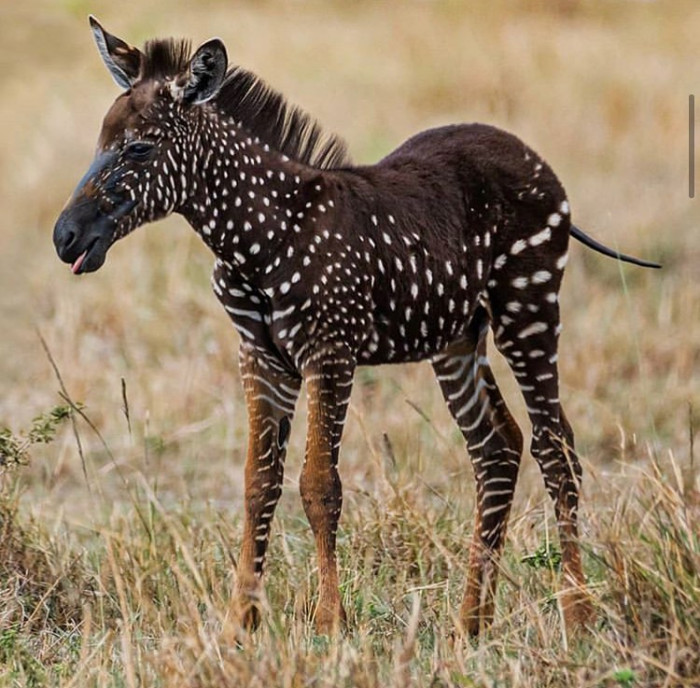 Facebook: The Wildest Africa
Facebook: The Wildest Africa
Grazing during the "Golden Hour"
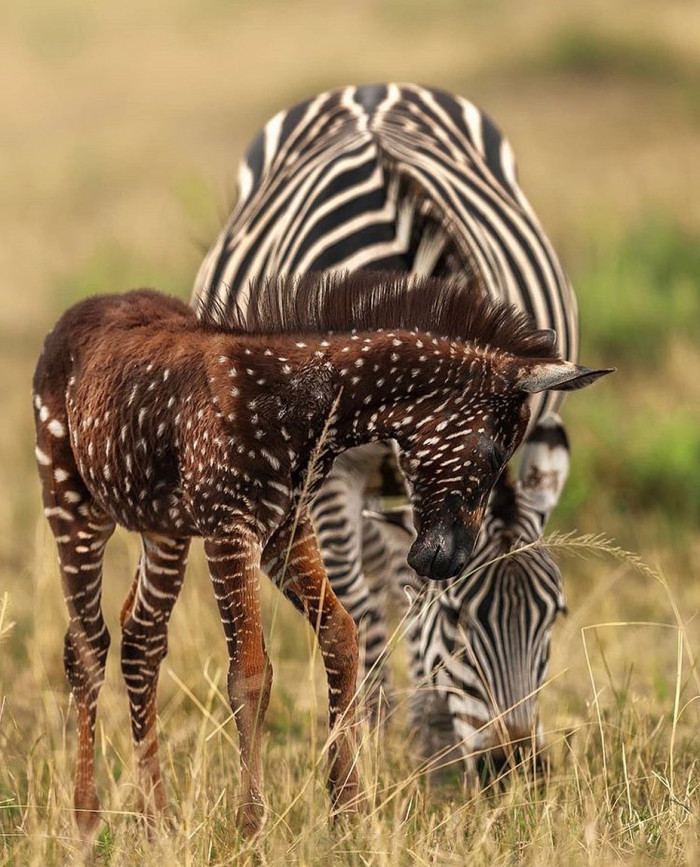 Facebook: The Wildest Africa
Facebook: The Wildest Africa On a stroll with Mom
Wildlife Photograph Frank Liu became one of the first people to see Tira after he was discovered and named. Liu shared some thoughts and pictures on his Facebook page.
“Last night a Maasai guide discovered an one of a kind genetically mutated baby zebra in Maasai Mara and named it after his surname - Tira.
This morning we were one of the first ones to visit Tira!
Few years ago there was a similar case, however that zebra still maintained the stripes and brush-like tail.
Tira, however, has patterns that appear as polka dots!
I hope the experts will look into this case and share some interesting discoveries soon!”
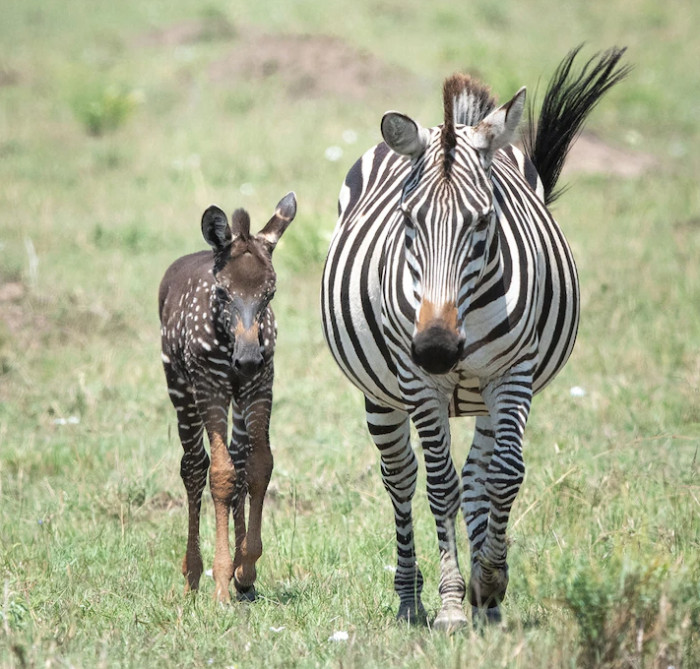 Frank Liu Photography
Frank Liu Photography
You can watch Tira in action here!
Another video by photographer Frank Liu
Remarkably, Tira the polka-dotted zebra isn’t the first abnormally patterned or colored creature discovered in the vast African Savanna.
Two white giraffes have been spotted in the Ishaqbini Hirola Conservancy located in Kenya’s Garissa county. And the birth of an Albino elephant calf was captured on film at the Kruger National Park in South Africa.
Living in the age of the internet is such a special treat. The world gets to delight in these wonderful and amazing alterations made by Mother Nature.
Here's to Tira, may he live a long and healthy life. If you agree with the sentiment, share this article with your friends and family!
Kylin







